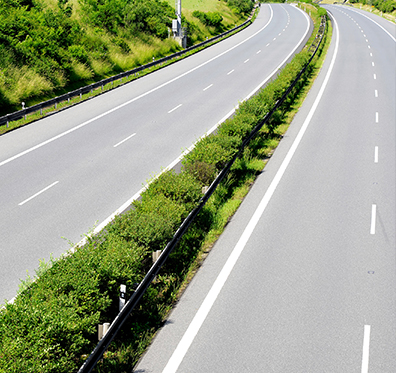The cool factor -
Turning down the heat
The use of Lysit as a constituent in concrete and asphalt and applied to roads, roofs and facades will reflect more solar energy away from the city.
LYSIT
Natural White Aggregate
Banishing the
Urban Heat Island
Lysit can help cities reduce the phenomenon known as Urban Heat Island. UHI is a particular problem for cities and built up areas, particularly in warm climates but can also occur in the UK in summer months. Thermal energy from the sun stored in roads and buildings creating a warmer environment than in surrounding areas – using Lysit in asphalt surface can reduce the surface temperature by up to 10°C.
Greener

Asphalt containing Lysit can lower surface temperatures by up to 10 degrees on a sunny day, preventing rutting and extending the life of the surface.
HOT SURFACE

Black asphalt roads absorb up to 95% of the sun’s energy, The use of Lysit as a constituent in concrete and asphalt and applied to roads, roofs and facades will reflect more solar energy away from the city.
CITY HEAT

UHIs have the potential to directly influence the health and welfare of urban residents because improved infrastructure through better design and awareness can reduce mortality rate during a heat wave.
Using Lysit in asphalt surface can reduce the surface temperature by up to 10°C.
Greener is Kinder
UHIS have the potential to directly influence the health and welfare of urban residents because improved infrastructure through better design and awareness can reduce mortality rate during a heat wave
Reflective asphalt surfacing incorporating LYSIT can reduce the surface temperature of the road by up to 10 degrees on a sunny day.
Reports from mainland Europe demonstrate that light reflecting asphalt surfaces in tunnels can deliver lighting savings of between 30% and 40%.
The luminance coefficient of LYSIT proves it to be one of the brightest “natural brightening” rocks on the market.
Safer, Greener, Better Value
Using Lysit to construct roads makes sense. Its light reflecting properties within the road surface can reduce lighting costs, improve environmental performance and contribute to road safety. By using less energy to power streetlights, it is also kinder to the environment than the traditional UK road surface and meets the needs and responsibilities of local authorities to reduce both the cost and carbon footprint of road infrastructure.
